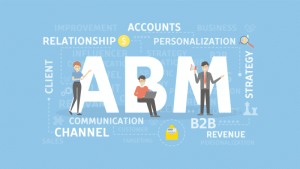As we transition from working virtually and rotational to some employees returning to the office, online presence is on the rise. Many persons are re-training and re-tooling voluntarily, and companies are creating quarterly goals that include methodologies for activity-engaging teams. This will include corporate training intended at developing new knowledge, new skills, and efficiency in executing tasks.
With the various types of corporate training available, employers need to differentiate based upon the company’s needs and timelines. Ascertaining the targeted groups for training should be a priority for any management team. These may vary from interns to new recruits or middle and senior-level teams. As staff receives promotions, there is usually an opportunity for training for the new positions and also for staff who may be considered to fill vacant positions.
The reason for corporate training is to increase the knowledge of the teams and the organization. Trained team members may get promoted, leading to job satisfaction and motivation. A sense of accomplishment can lead to team buy-in, productivity, and high standards, increase safety, limited accidents and incidents and higher efficiency.
As trainers, it is our role to help and support organizations in their capacity-building effort for team effectiveness based upon varying needs such as size, technical requirements, diversity and requirements for effectively meeting goals and objectives. The following are some categories of corporate training:
1. Orientation
Companies normally organize formal or informal orientation programs, one-time or longer meetings hosted by the HR Department for new employees in their first week on the job. The orientation sessions educate new team members on corporate culture, company mission, vision, and values, organizational structure, leadership, corporate policies, administrative procedures, contracts, and paperwork as well as a benefits package.
2. Onboarding
The Orientation session is a part of the Onboarding Session – a more extensive and department-related training planned over a period of time. This commences as soon a new hire is employed and the Team lead in each department manages the onboarding to ensure a clear understanding of the goals and to outline how they connect with the company’s objectives. Some of the issues addressed in onboarding sessions are – the employee’s needs, access to information and required skill sets, technical job specification, performance indicators, departmental goals, and employee-related matters.
3. Technical skills training
The methodology for developing the required skills in each employee is through the technical skills training for their individual roles. Some employees may have years’ experience in similar roles and therefore may need a refresher or company-specific new skills as well knowledge of the latest trends and technological advancement in their industry. Content writing, Social media management, Data analysis, Coding, Programming, Engineering, Specialists areas, are a few of the technical skills training that may be required by your organization.
4. Soft skills development
Employers should have prescribed codes of conduct, work ethics, and values that the organization prescribes. Employees will always be required to display a professional attitude and to work ethically. Personality traits and attitudes displayed by both new and older employees during communication with co-workers and customers are soft skills. These skills play a vital role in building effective teams, mutual respect, effectiveness, collaboration, and an efficient culture within any company. At Cerulean Inc, some of our most common soft skills training programs include: – Communication, Problem-solving, Teamwork, Presentation Skills, Leadership, Time management, Conflict resolution, Work ethics, Telephone Ethics, Customer Service, Service Quality, Creating a positive work environment, Improving team collaboration, Increasing team productivity, Establishing good relationships with teammates, Identifying and leveraging the strengths of team members, Keeping teammates motivated.
5. Products and services training
Some companies include products knowledge and services training as a significant part of their onboarding program aimed at providing in-depth information on different aspects of their product. We have also assisted companies to create these training programs as they introduce a new product line or a launching a new campaign. Some product trainings that may be offered are options available, Instructions for use, Benefits, Features, Care and maintenance, Price and Warranty.
7. Safety training
Many industries promote a safety culture and companies develop this culture as a duty of care to their teams and also as a competitive advantage. Safety and Security training can sensitized personnel to incidents and accidents prevention. Safety Training is mandatory for companies that handle or use toxic, noxious chemicals, hazardous substances, and materials. Fire drills, evacuation plans, contingency planning, and workplace violence procedures should be included in safety training. Other areas for safety training include personal protective equipment, safety best practices, first aid, food service safety, construction safety.
Originally published here.
Business & Finance Articles on Business 2 Community
(48)



